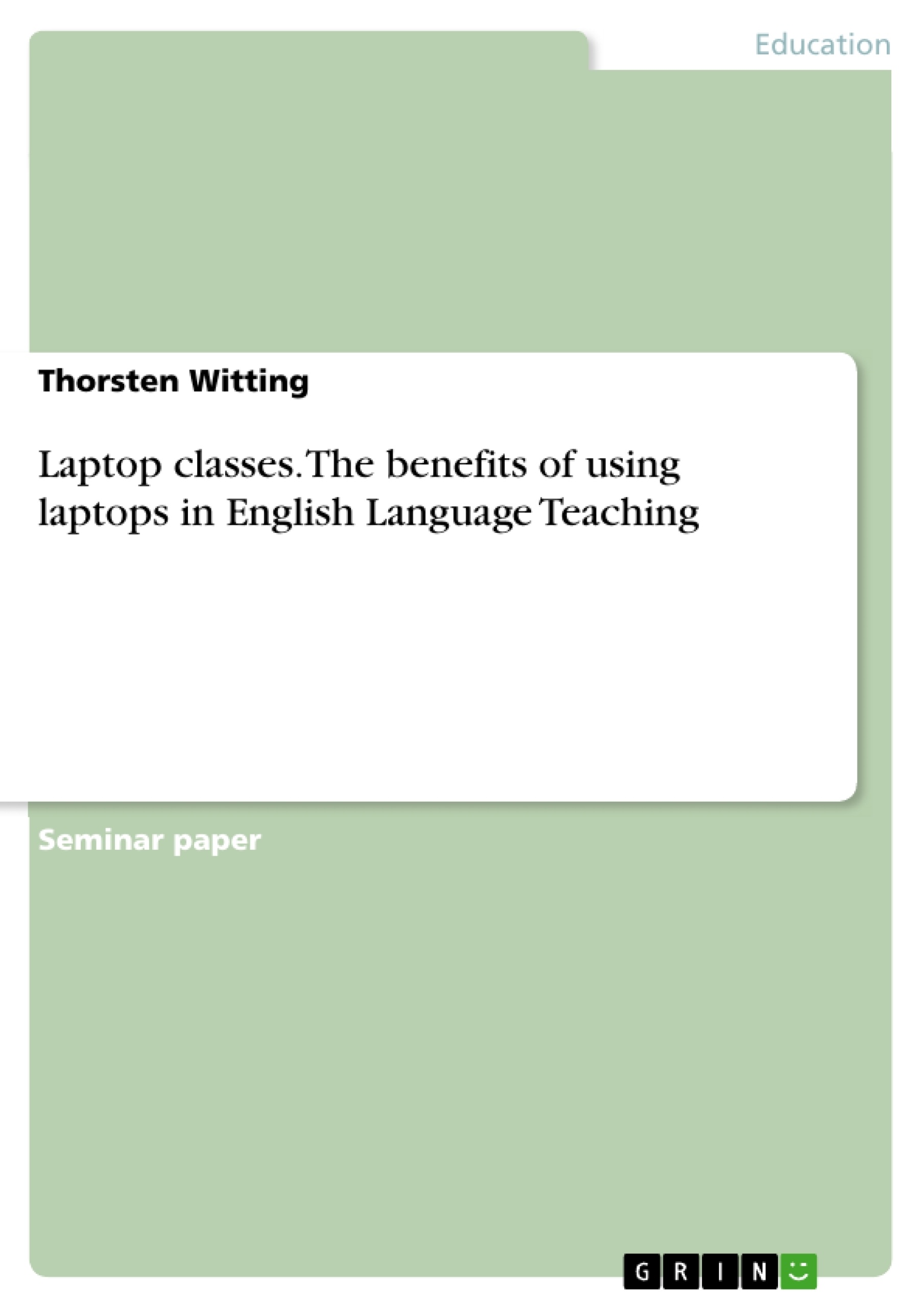This paper is about the use of laptops in everyday classroom situations. Laptops supplement or replace other teaching materials like school books in part or in total. The scope of replacement varies. Pupils have their own laptops which they use both in the classroom and at home. This paper addresses the didactical surplus of laptop usage in everyday learning situations, in so-called laptop classes.
Computers are tools used in everyday life for researching information, writing texts and various other uses. Hence, computer skills become more important. In laptop classes, basic computer skills are imparted from early on. This, however, is only one aspect of laptop classes. The teaching scenario changes from more teacher oriented to more pupil oriented.
Table of Contents
- Introduction
- Technical considerations
- Benefits using laptops in class
- Problems using laptops in class
- Laptops in the ELT classroom - Discussion
Objectives and Key Themes
This paper explores the advantages and disadvantages of integrating laptops into everyday classroom situations. It examines the potential of these devices to enhance learning experiences, specifically within the context of English Language Teaching (ELT) classrooms.
- Didactic surplus of laptop usage in learning environments
- Technical and practical considerations for implementing laptops in schools
- Benefits of laptops for student engagement and skill development
- Potential challenges associated with laptop use in the classroom
- The application of laptops in ELT to facilitate communication and task-based learning
Chapter Summaries
- Introduction: This chapter introduces the concept of laptops in classrooms as a supplemental or replacement for traditional learning materials. It highlights the importance of developing computer skills and the shift towards student-centered learning in laptop classes.
- Technical considerations: This chapter focuses on practical aspects of implementing laptops in a school setting, including ownership, hardware, software, and administration issues. It discusses the importance of careful planning and decision-making regarding these factors.
- Benefits using laptops in class: This chapter explores the educational benefits of laptops in classrooms. It emphasizes the development of media competency, software proficiency, and self-directed learning. Additionally, it discusses the use of real-world materials, collaborative learning, and the ease of accessing and sharing information.
- Problems using laptops in class: This chapter addresses potential challenges associated with laptop use in the classroom, including technical issues, distractions, and potential misuse. It highlights the importance of establishing clear rules and procedures to mitigate these problems.
Keywords
This paper focuses on the use of laptops in the classroom, specifically in English Language Teaching (ELT). Key themes include media competency, task-based language learning (TBLT), student-centered learning, technology integration, and the challenges and benefits of using laptops in educational settings. Additionally, the paper explores the use of real-world materials, collaborative learning, and the importance of addressing potential distractions and misuse.
- Quote paper
- M.A., M.Ed. Thorsten Witting (Author), 2011, Laptop classes. The benefits of using laptops in English Language Teaching, Munich, GRIN Verlag, https://www.grin.com/document/193040



